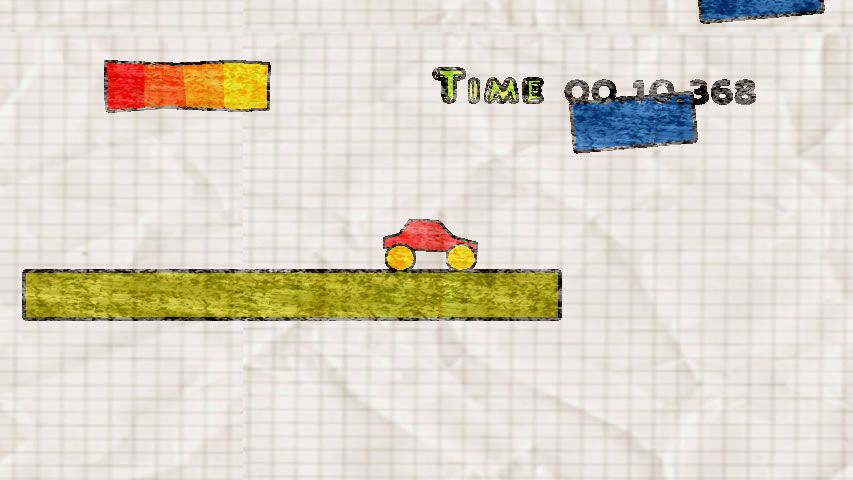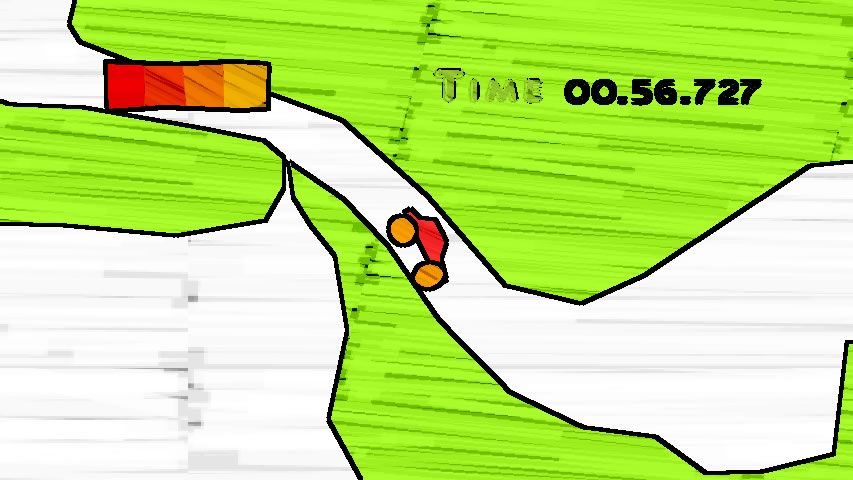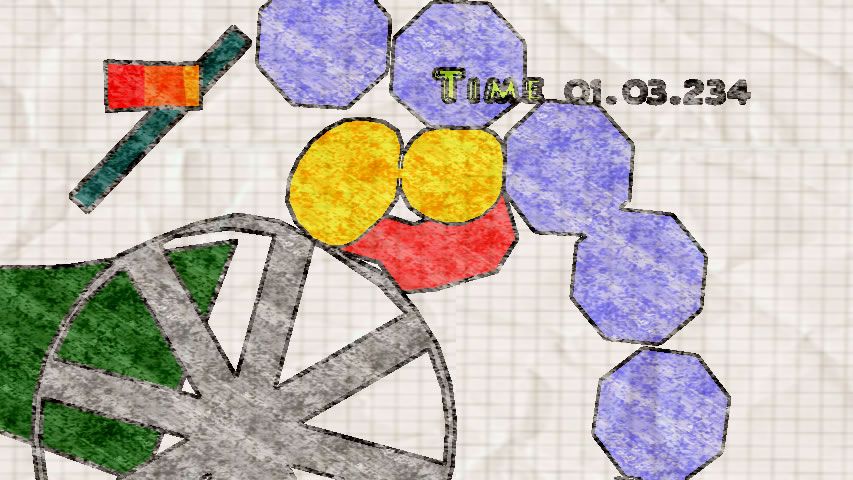Retro Replay Review
Gameplay
JelloCar’s core gameplay loop revolves around steering a gelatinous vehicle from the start line to a checkpoint in each level. Unlike traditional platformers, you control only forward and backward movement, while two additional controls allow you to shift the car’s weight toward the front or rear. This mechanic adds a surprising layer of precision—lean forward to climb steep inclines or shift backward to slam through obstacles with greater force. The result is a deceptively simple control scheme that feels fresh and immersive once mastered.
(HEY YOU!! We hope you enjoy! We try not to run ads. So basically, this is a very expensive hobby running this site. Please consider joining us for updates, forums, and more. Network w/ us to make some cash or friends while retro gaming, and you can win some free retro games for posting. Okay, carry on 👍)
The real star of the gameplay is the soft-body jelly physics system. Every jump, collision and ramp run is accompanied by realistic squishes, stretches and bounces. Push small boxes aside, get your car stuck under a platform and watch it inflate with comical urgency until you launch skyward. It’s a physics playground that rewards experimentation, whether you’re discovering new ways to vault over hazards or simply enjoying the elastic wobble of the car’s body as it bounces down a slope.
With 15 handcrafted levels, JelloCar offers a steady ramp-up in challenge. Early courses serve as tutorials for weight-shifting and inflation mechanics, while later stages demand precise timing and clever uses of the car’s squishy properties. A built-in replay function lets you review your best—and worst—runs, while an in-depth level editor gives you the freedom to create, share and tackle user-generated courses. This combination of curated content and community-driven extensions keeps the gameplay loop engaging long after you’ve reached the final checkpoint.
Graphics
Visually, JelloCar stands out by offering four distinct art modes: crayon, graphic, vector and blueprint. Each style radically alters the look and feel of the levels. Crayon mode paints a playful, hand-drawn world with waxy textures that evoke childhood doodles, while vector mode delivers crisp, flat-shaded polygons reminiscent of modern minimalism. Graphic mode sits between the two with high-contrast colors and bold outlines, and blueprint mode transforms levels into schematic line drawings with glowing accents.
The deformable environments and car animations shine across all visual styles. Soft-body physics feel truly alive when you see the vehicle’s gelatinous chassis bulge through narrow passages or flatten under heavy impact. Terrain elements like wooden crates, ramps and seesaws all react realistically to force, adding an extra dimension of visual feedback that’s as informative as it is entertaining.
Performance remains solid despite the intensive physics calculations and varied art filters. On modest hardware, the game maintains a steady frame rate, ensuring that every bounce and wobble looks smooth. Whether you’re playing in full-screen vector mode or sketch-like blueprint, JelloCar achieves a polished presentation that complements its inventive mechanics and invites players to experiment with both form and function.
Story
JelloCar embraces a minimalist narrative approach. There’s no sprawling tale or cast of characters to follow—just you, your bouncy car and a series of increasingly complex obstacle courses. This simplicity lets the physics and level design take center stage, keeping the focus firmly on gameplay innovation rather than cutscenes or dialogue.
That said, a subtle thematic thread ties the world together: you’re effectively testing prototypes in a whimsical research facility. Background details like scattered lab equipment, color-coded test chambers and ambient sound effects hint at a larger (though unseen) operation. It’s enough to spark your imagination without pulling you away from the rubbery thrills under the hood.
For players who value mechanical depth over storyline, JelloCar’s light narrative is a feature rather than a flaw. The absence of a heavy plot means you can jump in, experiment, fail spectacularly, and try again without waiting for story beats or dialogue interruptions. It’s a game about pure, unfiltered physics fun—and its minimal story framework supports just that.
Overall Experience
JelloCar strikes an impressive balance between accessible controls and deep, emergent gameplay. The soft-body physics system elevates every moment, turning ordinary platforming tropes—ramps, crates, seesaws—into opportunities for playful experimentation. The weight-shifting and inflation mechanics are elegantly simple yet yield a broad range of strategies for overcoming obstacles.
The variety of visual styles and the inclusion of a robust level editor significantly enhance replayability. Whether you’re replaying favorite levels in a different art mode or tackling community-created challenges, there’s always something new to explore. The thoughtful performance optimization means you can indulge in hours of jelly-based hijinks without worrying about frame drops or hiccups.
For players seeking a physics-driven platformer with a whimsical twist, JelloCar is a standout choice. Its minimalist story frees you to focus on mastering the unique mechanics, while the level editor and replay features ensure your creativity and competitive spirit stay satisfied. If you enjoy inventive, tactile interactions and quirky visual flair, JelloCar delivers a delightfully squishy ride from start to finish.
 Retro Replay Retro Replay gaming reviews, news, emulation, geek stuff and more!
Retro Replay Retro Replay gaming reviews, news, emulation, geek stuff and more!









Reviews
There are no reviews yet.